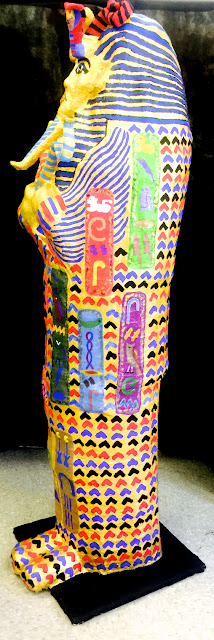In this project the students
created large sculptural models of insects. Working in groups, they first researched insects on the
Internet. Each group selected one
insect to be their group’s project.
They then further researched their choices, identifying characteristics
that would ensure that their models would be reasonably scientifically
accurate, although the main purpose was for them to be aesthetically beautiful.
The next step was to
determine how to make a model of an insect that would be hundreds
of times
larger than in real life.
Decisions had to be made regarding which materials to
choose that would provide the necessary structural support. Then the actual work began! (And the work was, at times, messy!)
choose that would provide the necessary structural support. Then the actual work began! (And the work was, at times, messy!)
It was also necessary to determine how best to connect different types of materials. For example, if a wire framework was created for the wings, it had to be securely fastened to the body.
A great deal of trial and error took place. In other words, the students had to apply engineering principles, generating creative solutions to the problem of constructing their models.







































